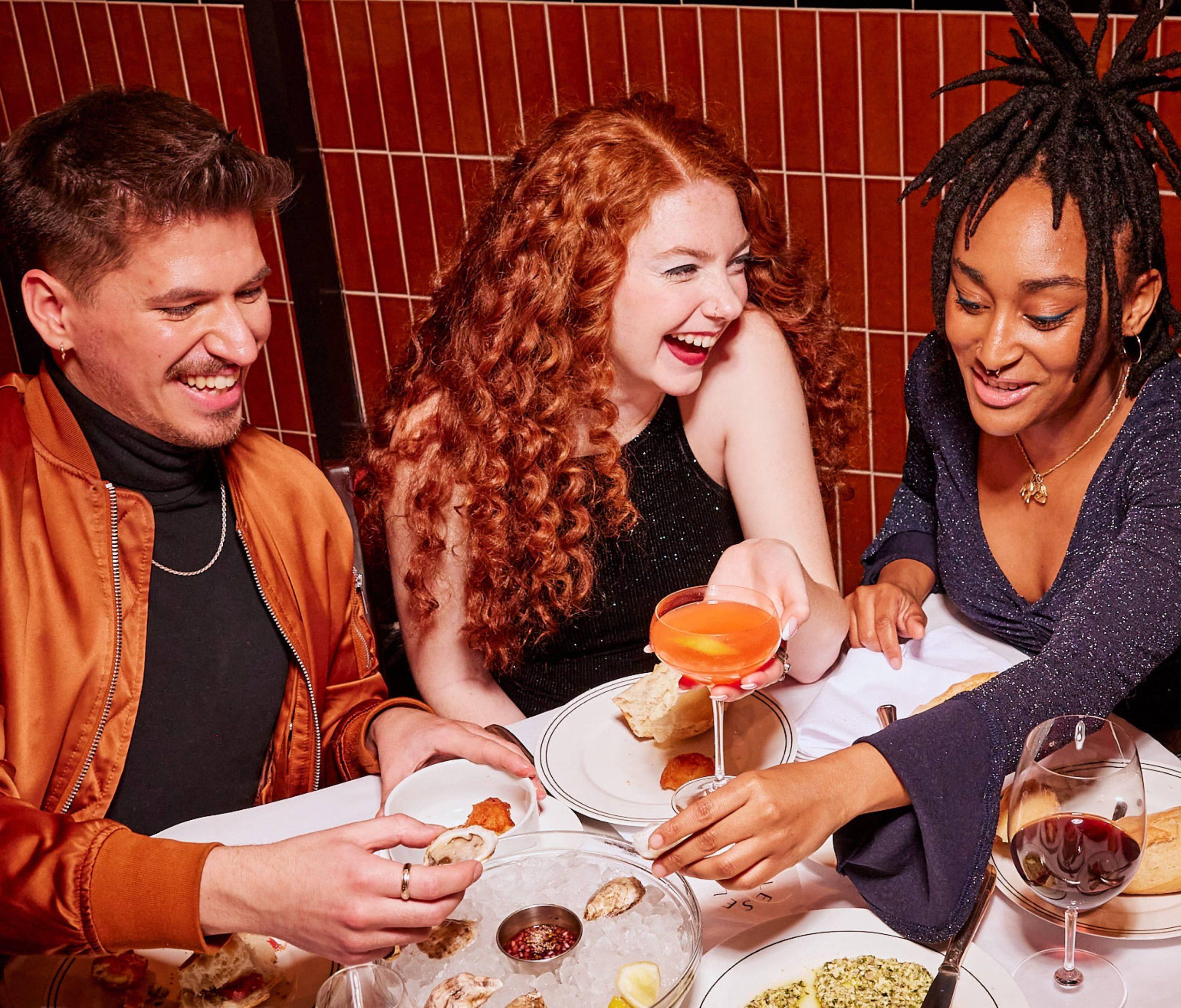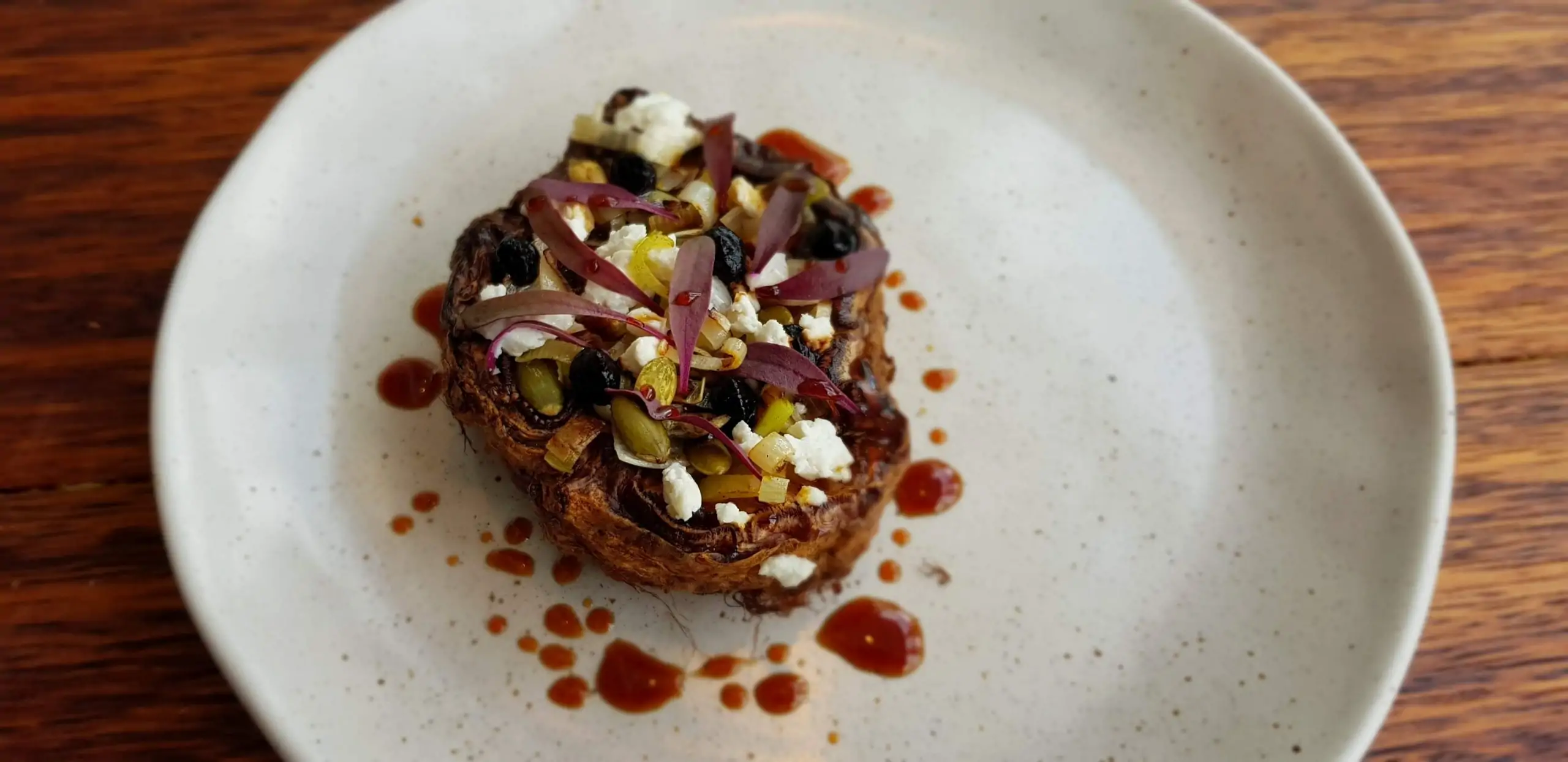To start off 2018, we spoke to three Aussie chefs to find out what the big trends and challenges will be. It’s certainly going to be an interesting year, with global issues driving local philosophies.
Gareth Howard from acre eatery, Camperdown
Food waste is no longer a niche issue, according to Gareth Howard, who is executive chef at acre eatery at Camperdown in Sydney’s inner-west. “Waste reduction initiatives keep gathering traction and are becoming mainstream,” he says. “We had the honour of welcoming recycling food waste pioneer Robert Egger from LA Kitchen at acre last month. He began helping people in need many years ago, and more recently set up LA Kitchen – a self-sustaining social enterprise built around the premise of transforming bruised, overripe fruits and vegetables into amazing, balanced meals for the elderly and other people in need.”
Howard says finding ways to use expiring fruits is as old as time. “Just think about your grandmother making banana bread with overripe bananas, or families in the Mediterranean preserving all the summer fruits ready for winter,” he says. “Today we see all sorts of waste reduction initiatives popping up, throwing innovation into the mix.”
Chefs and consumers have a growing understanding of the fact that we can’t continue to strain the world’s resources, Howard says. “We also cannot continue to consume proteins the way we do,” he says. “Chefs are turning to on-site growing and seasonal focused menus to lessen the strain. Secondary cuts of meat, offal and lesser known seafood varieties help to lessen the load.”
The faux-meat trend is also gathering traction, with more initiatives that work towards a more sustainable food system without compromising on taste and quality. “The Impossible Burger in the States is a great example of this,” Howard says. “The burger looks and tastes exactly like a great burger, but has no meat whatsoever in it. It is made from plant and vegetable matter and grown in labs. Is this possibly where the food system may end up? It would certainly lighten the strain on the earth’s resources.
“Globally, there’s a growing curiosity for food production, a need within the consumer for traceability and transparency. We see a fermentation boom: more people making their own craft beer, pickles, kimchi, sourdough bread. We see people starting their own veggie gardens. Consumers want to understand where their food comes from, how nature works. They demand more information about what’s in their food. They also want to know more about how it’s produced – how much water and land is used, and how much is thrown away. Luckily for me, farm-to-table taps into that need.”
Howard says the most realistic way for chefs to reduce their environmental impact is promoting nose-to-tail eating and using secondary cuts. “At acre, we’ve always implemented nose-to-tail eating and waste reduction programs such as composting and water recycling,” he says. “We prioritize produce from our on-site garden, reducing food travel miles to eight metres. We consciously partner with small to medium-sized, local (mostly Sydney-based) suppliers who share our vision on sustainability.”
Jo Ward, Om Nom Kitchen, Adelphi Hotel Melbourne
Pop-up restaurants and progressive dining experiences will become a popular trend in 2018, executive chef Jo Ward from Om Nom Kitchen in Melbourne believes.
“I think diners are now willing to pay more for an experience rather than just a meal,” she says. “This means restaurateurs have to continue to push the boundaries with new dining concepts, which I think is great for the industry.”
She also sees Japanese cuisine becoming more popular. “We are already starting to see Japanese cuisine and culture have a huge influence globally, and I think 2018 will only see this influence grow more in the Australian food industry,” she says. “I was lucky enough to be selected to visit Valrhona Tokyo for training this year and observed how advanced their cooking and cuisine really is.”
Ward believes the biggest challenge the industry will face, particularly with more venues opening in Melbourne, will be staff shortages. “It’s really hard to find staff with the right attitude and skill level,” she says. “Therefore, I try to create a happy work environment for my team – a place they enjoy coming to – and give them as much opportunity as I can to be creative and innovative.”
Joshua Askew from JPB Restaurant, Swissotel Sydney
With a greater demand for healthier menus and price hikes in produce, amenities and staff wages, JPB Restaurant executive chef Joshua Askew says more chefs will turn to plant-based dishes. “This will also encourage chefs to be creative with vegetarian dishes, which sadly are usually the most neglected section of the menu,” he says.
Askew also agrees that people are becoming more interested in where their food comes from. “They also want to be more informed about farming practices and to know exactly what goes into the process from farm to table,” he says. “We will see more chefs leading the charge with using organic, sustainable and heritage produce in their menu.”
Growing demand for food ordering apps like Foodora, Deliveroo and Ubereats will lead to more digital restaurants popping up, or existing eateries using such platforms to increase brand loyalty and revenue. “However, the down side for restaurant goers will be the increased waits and having to navigate through the maze of delivery bikes waiting out in the front!” Askew says.
But he believes the greatest problem in 2018 will be the increasing skill shortage aggravated by changes made to 457 visas.
“It will certainly put extra strain on an already tough market, with hotels and restaurants doing anything they can to not only attract new talent but also retaining and training existing staff,” he says.
“We are lucky to be part of a larger hospitality brand that supports us in many ways where staffing and training are required. We are also very proactive in working with local TAFEs and training institutes to ensure we are staffed correctly.”



